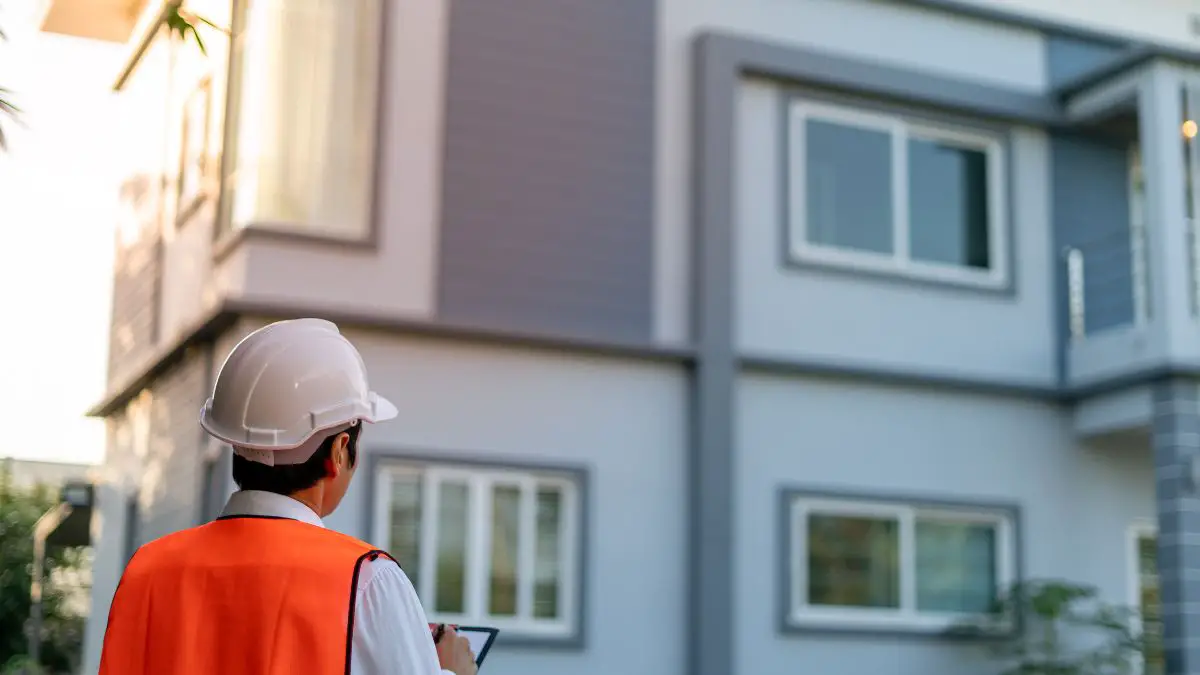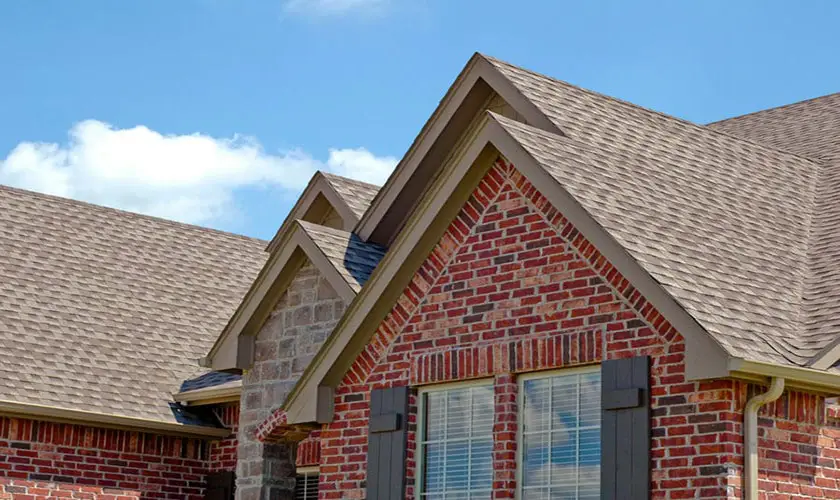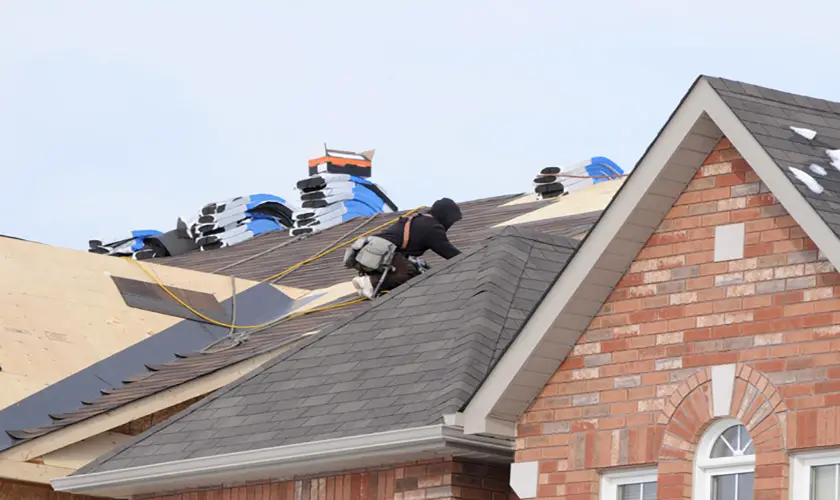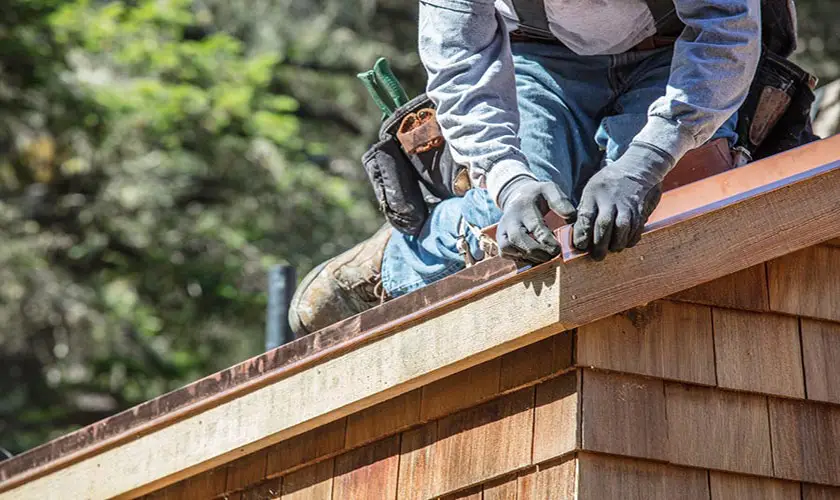
A sagging roof isn’t only ugly to the eye but could also present a danger to your family. Since all roofs are developed to be straight, a sagging or curved roof has become structurally insufficient. It may be a warning that your roof might collapse sooner or later.
Some of the causes of a sagging roof include water damage to the roof’s surface, excessive weight from snow, and inferior quality materials. All in all, there is no need to panic when your roof starts sagging since you can repair it without breaking the bank. You can approach a professional to help you out or do it yourself.
However, we wouldn’t recommend you to do the project yourself without the proper assistance and preparation. In this article, we’ll focus on roof sagging, including causes and how to fix it.
Can A Sagging Roof Be Fixed?
The truth is that a sagging roof, no matter the extent of sagging, can be fixed. All you need is to identify the degree of sagging and involve the proper roofing professional to help you out.
Equipment And Materials You Need To Fix A Sagging Roof
If your roof is sagging, you’ll need the following equipment to fix it:
- Drill
- Flashlight
- Chisel
- Steel ‘L’ channel
- Washers & bolts
- Pneumatic nail gun
- Plywood
- Nails
- Lumba strapping
- Styrofoam
- Plywood gusset
- Measuring tape
Here is the process of fixing your sagging roof:
Identifying The Problem
The solution with a sagging roof starts with identifying the problem and the extent to which it has happened.
- Identify the location where the sag has happened to the attic.
- Take your
flashlight and go to the attic to inspect your roof decking and rafters, specifically in areas where your roof is sagging. - Proceed to examine the plywood gusset, which is employed where the wood connects on a truss.
- Identify damages that include breaks, rot, cracks, and any other impairment.
Fixing A Rafter Or Truss
If you want to fix a truss or a rafter, follow the steps below:
- Use the ‘L’ channel to get your rafter or truss back into shape.
- First, employ your drill for drilling four holes in every side of the ‘L.’
- Next, apply your chisel to remove pieces of wood, including broken scraps or fragments that might interfere with your repair.
- Mount the ‘L’ into your rafter or truss. It would be better if you start to mount at the end that’s more difficult to access.
- Using the holes you drilled earlier, use washers and bolts to fasten the ends of the channel to the rafter and truss.
- After the end is in the right place, proceed to move your broken piece into position.
- Determine the gap between the rafter or truss and the channel and special bolts that are at least 11/2″ – 2″ more than the gap.
- Insert the two bottom bolts and tighten them until the washers become flush with the channel.
- Proceed to tighten the bolt farthest from the break or crack until the other bolt head is almost ¼-inch from the channel.
- Keep tightening the back bolt until it gets closer to the channel. Proceed to tighten your front bolt until the back one is almost ¼-inches from the channel.
- Keep tightening the bolts until the rafter or truss becomes secure against the ‘L’ channel.
- Insert bolts in the remaining holes and then tighten.
- Once your rafter or truss is back into place, provide additional support on the area.
Fixing A Gusset Plate
Go through the steps below to fix a gusset plate:
- The first step is removing the gusset plate that’s entirely or partially away from the pieces of wood.
- Replace the plate with a ½-inch plywood gusset.
- Use nails and a pneumatic nail gun to attach the gusset to all sides of the wood pieces.
- It replaces the strength of the former gusset plate.
Fixing Roof Decking
You should always involve a professional when it comes to repairing a damaged roof decking. However, you can still implement a temporary solution through the steps below:
- Measure the damaged area between the trusses or rafters.
- Cut a ½-inch piece of plywood that can cover the area.
- You can then glue a 1-inch piece of rigid styrofoam onto your plywood. It is because driving nails into the sheathing material might make things worse.
- Place the styrofoam foam-side-up and piece of plywood against the roof decking.
- Push on the plywood until you see the foam touching the roof decking underside.
- Use lumbar strapping to maintain the plywood position until you can contact a roofing professional to fix it.
If you follow the steps above, there is a high chance that you’ll fix your sagging roof.
What To Do About A Sagging Roof?
If you realize that your roof is sagging, the least you can do is to repair it. You can quickly go through the steps above to manage repairs effectively. However, if you don’t have the skills and knowledge to do repairs, you can involve a roofing professional.
Hiring a qualified professional isn’t only cost-effective but also time-efficient. The positive thing is that many companies offer roofing services.
Here are some reasons why you should hire a professional to fix your roof:
- It’s cost-effective: In most cases, fixing the roof yourself happens to be cheaper because you avoid paying for the labor cost. However, if you don’t have skills in repairing your roof, it might become costly in the long run. For instance, you’ll be forced to buy your materials and tools. The best option, therefore, is to hire a professional roofing expert.
- Quality materials: Qualified roofing experts know the perfect type of building and the type of job. If you do it yourself, you might use poor-quality materials.
- There is no need to do anything yourself. Repairing a roof takes a lot of time and effort. It would therefore be best if you relaxed and let someone else do the work.
How Serious Is A Sagging Roof?
Once your roof starts to sag, it’ll begin to get more expensive and worse for repair. Eventually, it’ll curve in, leading to significant damages to the rest of your house. It is as serious as could even result in injury or death to anyone in the house. To fix substantial damage on your roof, you’ll have to involve a construction professional.
A sagging can lead to the following:
Leaks
For most sagging roofs, leaks are the most outright noticeable sign. In most cases, you can repair the leaks quickly. However, certain leaks are beyond repair or even very costly to fix.
Whenever you notice water getting into your home, you should have a qualified contractor do an inspection and eventually repair it. A professional will either suggest a repair or an entirely new roof. They can also approximate the lifespan of your roof.
Windows and Doors That Won’t Operate Properly or Stick
There is no hiding that a sagging roof can also cause trouble with your window or door and make it difficult to open. It’ll force you to make costly repairs on the windows and doors.
Cracked or Buckling Ceilings
In most cases, you might notice buckling and cracked ceilings from the inside of your house. If you don’t repair it at this time, your house might be a danger to those living inside.
Cracks In Masonry
Crumbling or cracking brick wood can be an indication of a sagging roof. It means that you have lasted long before noticing and doing a repair on your roof. Immediately you see cracks on your bricks, you should call a Mason to help you out. If you stay for long before addressing the issue, you’ll end up incurring more costs.
What Could Cause A Sagging Roof?
You should always be worried every time you spot a sagging on your roof. Even though a slight sagging doesn’t necessarily point to your roof being in danger, it shows that you should act almost immediately.
Most of the time, you can replace a sagging roof. If you want to fix your roof effectively, it would be best to identify the causes of roof sagging. Let’s look at the causes below:
Water Damage
Rain can lead to damage to a roof if you don’t design and maintain it well. It means that roofing materials and shingles should be in good condition to let the water run off quickly. You should install metal flashing on the junctions and valleys to direct water away.
If there is damage on any part of your roof, it’ll give water a chance to get through and weaken underlying structures.
If your gutter system is poorly designed or damaged, it can cause water issues. You should therefore direct water through the gutters to prevent such problems.
Poor ventilation in the attic also causes water challenges. It causes poor airflow in the areas, thus leading to a moisture build-up. Water can therefore permeate through the surface of the roof easily.
If your roof is sagging due to water damage, you should first correct the problem leading to the sagging. It might mean replacing flashing and shingles, improving attic ventilation, and repairing your gutters.
You can install angled braces to shore up rafters and correct the sagging. You can also offer more support to your walls.
Design Flaws and Excessive Weight from Snow
Each roof is designed and developed to support a certain maximum weight. Anything above that limit can cause your roof to sag. Among the primary causes of sagging and excessive weight in roofs is snow.
If you think that your roof is sagging because of snow, it would be best for the safety of your roof and your family that you contact an expert to clear the heavy snowfall. If you don’t remove the snow properly, you might end up damaging your roof and lead to further sagging.
If you want to do it yourself, you should use a roof rake. You should also keep your roof attic ventilated and insulated to limit ice dams that lead to roof leaks.
Weight-related roof sagging can also emanate from design flaws that make your roof unable to support its weight. Common design flaws include using no collar ties on rafters, insufficient sheathing, or undersized rafters.
If you want to address design flows, you can install new rafters along with damaged or weak ones. You can also replace weak sheathing with sturdier and thicker options.
If the roof is sagging due to the weight of many shingles, you must remove all the shingles and install new ones. However, this time around, you should use lighter materials.
Less Common Causes of Roof Sagging
Faulty insulation and poor-quality roofing materials can lead to slumping in roofs. Poor quality materials are prone to weather and water damage and deteriorate faster.
However, everything depends on your climate, the materials you use, and the design you implement. Although even the best quality materials don’t last forever, a good roof should last for about 15 years to 30 years. If your roof has more than 30 years, you should rebuild it to solve the sagging challenge.
However, the roof doesn’t sag only as a result of problems related to the roof. For instance, if your house’s foundation sinks or shifts, your roof and walls might also shift along. In such a case, you’ll observe cracks and tilting in the foundation. If you want to repair foundation-related damages, you should contact a construction professional to help you out.
Once your roof has started sagging, it can only get more expensive and worse for repairs. It could also curve in, thus leading to more damage to the rest of your house. There might even be significant injuries to those in the house.
How Much Does It Cost To Repair A Sagging Roof?
The cost of repairing a sagging depends on many factors. For instance, the cost of repair varies depending on the type of material, type of repair, type of replacement, location, and whether it’s an emergency or not.
The national average of repairing a sagging roof is $750. The average range of repair is between $300 to $1,500. However, the minimum you can spend on your repairs is $50, while the maximum might be $10,000.
Conclusion
Like we have seen above, a sagging roof isn’t only appealing to the eyes but can also cause great danger to the lives of those involved. Some of the causes of roof sagging include water damage to the roof’s surface, excessive weight from snow, and poor quality materials.
You should carry out a regular inspection on your roof to determine whether there are any signs of sagging or not. If you notice any signs of sagging, it will help if you start to repair and fix the roof immediately.
However, you should understand that the repair cost varies depending on several factors, including the type of material, repair, replacement, and location.
If you don’t have the skills and knowledge to fix your roof, always contact a professional. Don’t hesitate to save your home from damage.
Sources:
PJ Fitz.com: HOW TO FIX A SAGGING ROOF
LegacyUSA.com: HOW TO FIX A SAGGING ROOF
Fixr.com: How Much Does it Cost to Repair a Roof?







